Description
From the 1930s to the end of the fifties, most audio recordings of radio stations were kept on 78rpm discs (magnetic tapes only started to be used routinely in France from 1950). Over time these records (discs) have deteriorated through handling or natural causes. Some records of priceless historical value can no longer be read by the usual means (magnetic cells with a diamond stylus) and the surface of the disk cannot be mechanically restored. Some 20,000 of INA's 276,000 discs are in such a condition. The same applies in a large number of archives of radio broadcasting organisations all over the world.
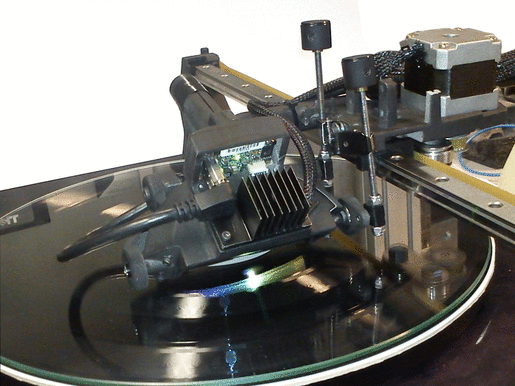
Scratched, broken or split discs cannot be played by mechanical means. This is also true of discs whose surface has altered and deteriorated.
Our process can read these discs optically, without a stylus and without any physical contact.
Operating Principle
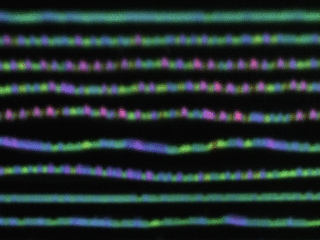
In 2002 INA devised an innovative process (patented in 2004) for optically reading audio discs based on reflective properties of the groove walls. With the participation of INDEEP, in the framework of the PrestoSpace project, we have carried out research and designed a device that converts the signal from pictures of the disc's surface into an audio signal.
- A camera acquires the images.
- The sides of the groove act like mirrors angled at 45 degrees that reflect light coming from a single direction, which depends on the initially recorded signal.
- A specially designed lighting system adjusts the colour of the flash depending on direction.
- The grooves appear on these images as coloured lines.
- A subsequent process translates these colors into audible signal.
- Several tracks are digitised on each rotation of the turntable.
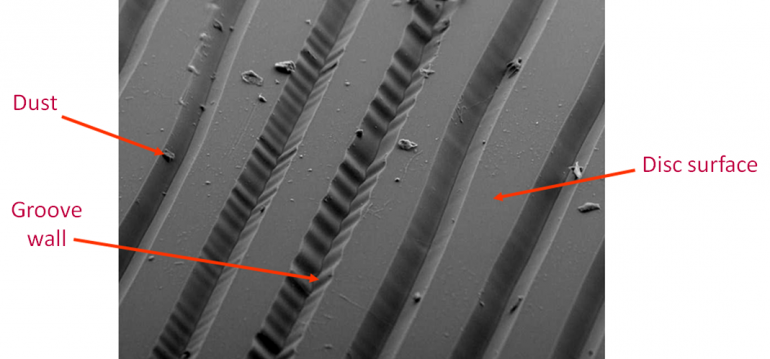
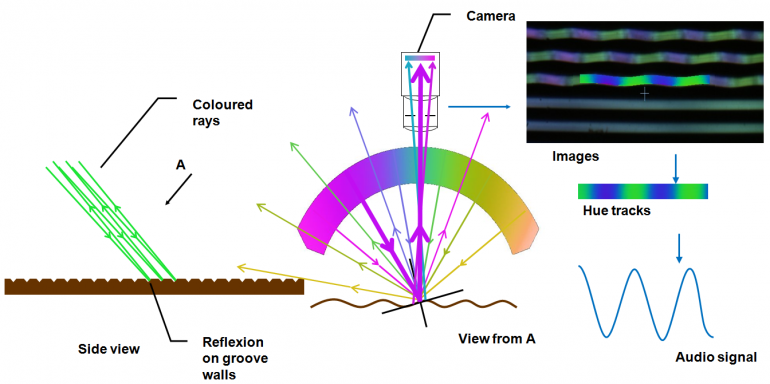
Pros and Cons
Benefits compared with mechanical reading processes:
- No inertia: the signal is not distorted
- No wear of the disk
- Selecting suitable stylus not needed
- Cleaning the disk is not so important
- Discs covered with scratches or cracks can be read
Benefits compared with other optical reading processes:
- No consumables (photographic film)
- Standard camera, medium resolution
- Good frequency response
- Detection of regions where the signal is unreliable (scratches, occultations). The signal can be reconstructed selectively in such regions.
- Dirty discs can be read.
Drawbacks:
- Slow: currently several hours per side
- Quality often lower than using conventional playback. To be restricted to difficult cases (broken/cracked/de-laminated...)
Physical Implementation
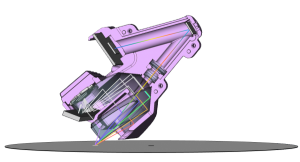
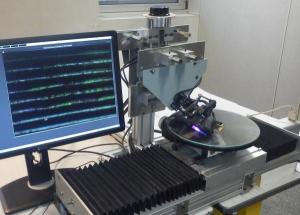
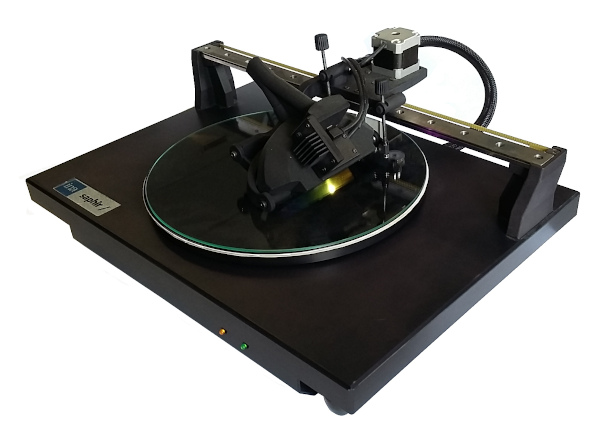
Broken Discs
The retracted cellulose lacquer on these discs makes them unreadable with conventional processes.
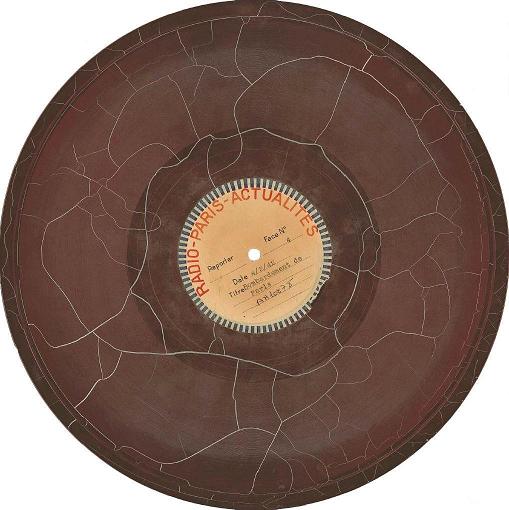
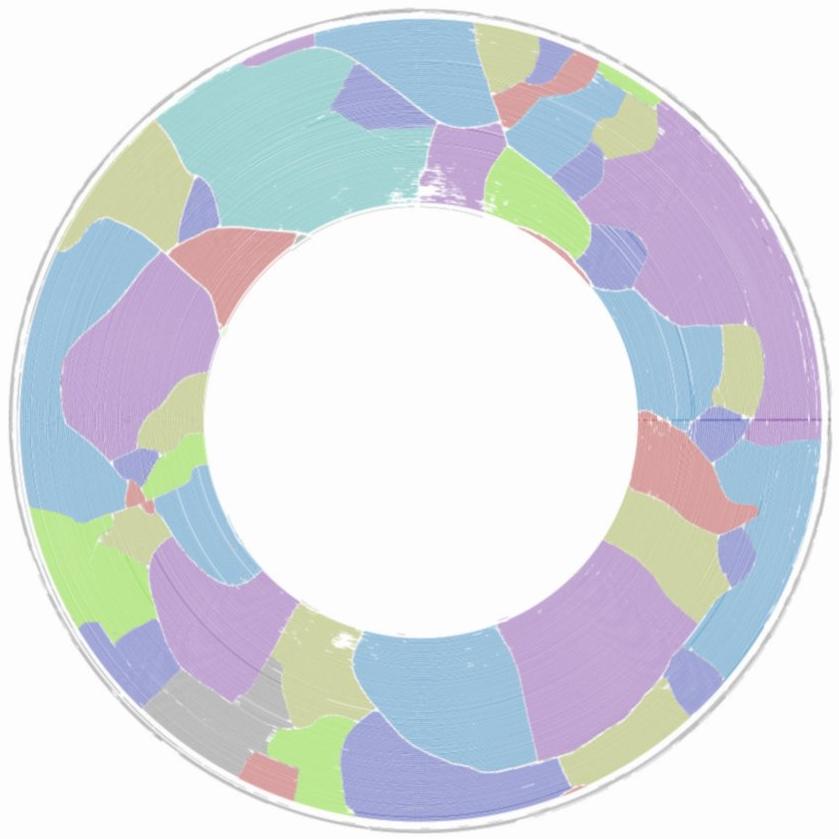
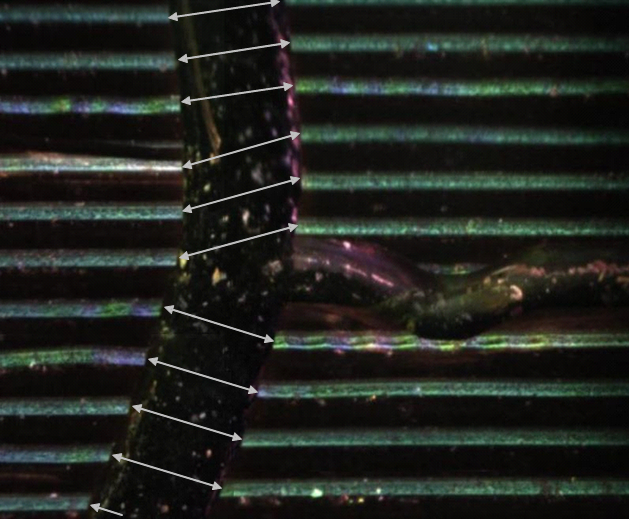
Decoding Interfaces
A dedicated interface allow controlling disc decoding, here a broken glass-base lacquer disc.
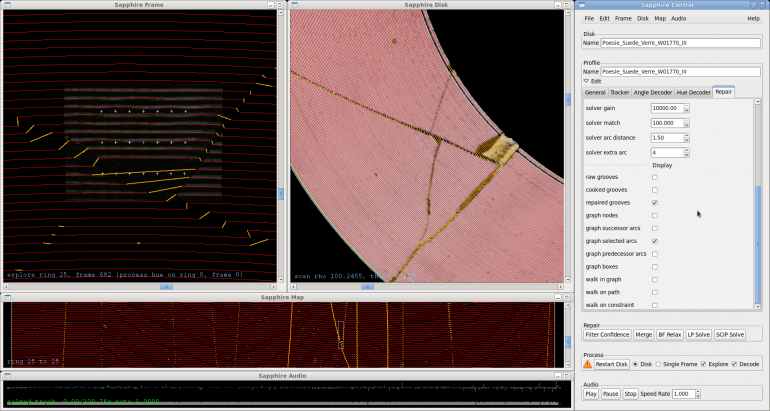
Playback Examples
A few significative examples amongst hundreds of fully recovered records:
Broken glass-base lacquer disc W01770/PHD85003884, interview in Sweden of Olgor/Olmer? Ahlenius by Maurice Fleurent : "La poésie en Suède : l'influence française", broadcast on 7/09/1946.
Disc 13, side 25, DC13782 "Cabaret Dolto", recorded 14/11/1951 (lacquer disc, with a few cracks).
Box 73, disc 1, side A, Dargent corpus (set of 712 Spanish language broadcasts on Radio-Paris, by Spanish republican refugees, from 1946 to 1949)
Set W1425, "Voici ma carte Monsieur : L'existentialisme Pictural !", 10 minutes live recording by Pierre Sabbagh of the first French post-war (spade) duel, 1946. Zinc-base lacquer disc, severely degraded, very brittle lacquer, peeling off (excerpt).
First recording by fado singer Maria Teresa de Noronha: Fado de Mouraria (1939). Aluminum-based lacquer disc, numerous fine cracks.
Large (40cm, 16-Inch) 33rpm medium-groove glass-based lacquer disc record, broken in 10+ pieces, some pieces missing.
Outcomes
Roughly 20,000 of INA's 276,000 discs can no longer be played with conventional means. Hundreds of thousands of records in the World are in the same condition. Under active development, INA-Saphir is already a replicable and transportable system suitable for digitizing those records. The system can be made available to museums, libraries, radio broadcaster's archives departments all over the world, or to audio digitization service providers.
INA-Saphir News
- August 2023 : The Czech National Museum acquires an INA-Saphir audio disc optical digitization system (Prague, CZ).
- October 2021 : Projet SirDuke : numérisation de 51 faces de la VRT (VRT, Gecko, meemoo, INA) (Montreuil, FR).
- Sept.-Oct. 2019 : "Bring Your Own Disc!" : 36 sides from 21 discs, 7 countries, digitized in the framework of IASA2019 and JTS2019 conferences (30/09-05/10/2019, Hilversum, NL).
Funding / Partners
This work was supported by European Commission in the framework of PrestoSpace project (FP6-IST-507336 2004-2008), and by French Fonds national pour la Société Numérique (FSN), Cristal project (FSN-AAP1-012085-405850, 2011-2012). Companies Indeep and Optis have contributed to the project.
Project members
Jean-Hugues Chenot (head of project), Jean-Étienne Noiré (researcher)
Past members
Louis Laborelli (researcher), Alain Perrier, Gilles Daigneault (researcher), Paul Tomi (researcher)
Publications list
Challenges in Optical Recovery of Otherwise Unplayable Analogue Audio Disc Records
J-H. Chenot and J-E. Noiré
AES 2023 International Conference on Audio Archiving, Preservation & Restoration, June 2023 (link)
Saphir. Numériser les enregistrements sur disques audio analogiques illisibles mécaniquement
J-H. Chenot
Revue Culture et Recherche No 141, Printemps-été 2020, Cinéma, Audiovisuel, Son., p. 81–82, June 2020 (link)
Saphir: Digitizing broken and cracked or delaminated lacquer 78 rpm records using a desktop optical scanner
J-H. Chenot, L. Laborelli and J-E. Noiré
JTS2019 (Joint Technical Symposium of CCAAA), September 2019 (link)
Saphir: A Desktop Optical Scanner for Digitisation of Severely Damaged 78rpm Lacquer Records
J-H. Chenot, L. Laborelli and J-E. Noiré
Proceedings of the 53rd Annual Conference of the ARSC (Association for Recorded Sound Collections), 2019
Saphir: Optical Playback of Damaged and Delaminated Analogue Audio Disc Records
J-H. Chenot, L. Laborelli and J-E. Noiré
Journal on Computing and Cultural Heritage (3) (11), p. 14.1-29, Association for Computing Machinery, September 2018 (link)
Equipement pour la lecture optique des disques phonographiques analogiques
L. Laborelli
Patent, (EP1626402), October 2007
Dust Detection by Colour Analysis in an Optical Method of Phonographic Disks Digitisation
L. Laborelli and J-H. Chenot
IEEE International Conference on Image Processing, 2007 (ICIP 2007) (IV), p. 25, September 2007 (link)
Non contact phonographic discs digitisation using structured colour illumination
L. Laborelli, J-H. Chenot and A. Perrier
Audio Engineering Society - 122nd Audio Engineering Society Convention 2007, p. 401–411, May 2007 (link)
Equipment for the optical playback of analog phonographic records
L. Laborelli
Patent, (US200604498), February 2006 (link)
Équipement pour la lecture optique des disques phonographiques analogiques
L. Laborelli
Patent, (FR2874280), February 2006